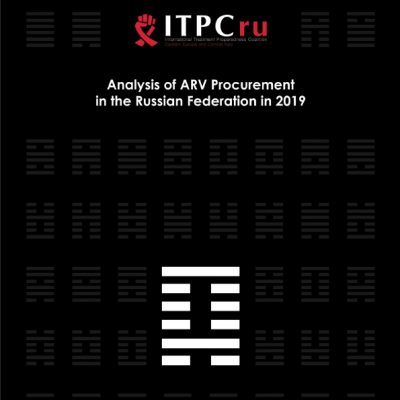ITPCru has released its latest report, providing a yearly analysis of community-monitoring of ARV procurement. The 2019 report marks 10 years since this community-monitoring began in Russia, and their approach has been successfully replicated in other countries.
“A lot has changed in 10 years,” the report authors outline in their introduction. “ARV therapy coverage in Russia has increased more than 10 times – from 43,000 persons in 2009 to half a million in 2019. However, it should be noted that in some aspects progress is almost absent and, in some areas, there has been a regression. This includes the continued widespread use of obsolete drugs, refusal to procure combination drugs, and interruptions in supply. However, first of all, we are talking of the fact that the epidemic growth continues to outpace the provision of antiretroviral therapy to people living with HIV.”
More than one million people are estimated to be living with HIV in Russia. Despite the growth in actual numbers, the estimated number of annual ARV therapy courses procured in 2019 covers about 43% of all registered people living with HIV.
The majority of the country’s ARV budget was spent on patented drugs, including:
- lopinavir/ritonavir (18.8%)
- raltegravir (13.8%)
- dolutegravir (13.8%)
- etravirine (9.3%)
- rilpivirine/tenofovir/emtricitabine (8.9%).
 Despite these five drugs netting 64.6% of Russia’s ARV budget, this did not correlate to providing the majority of the drugs (it is about 32% of all estimated treatment courses procured in 2019).
Despite these five drugs netting 64.6% of Russia’s ARV budget, this did not correlate to providing the majority of the drugs (it is about 32% of all estimated treatment courses procured in 2019).
Most of the drugs procured and prescribed in Russia are generics. For drugs classed as NRTIs, nearly 100% are generics.
“The majority of people receiving HIV treatment in Russia are receiving generic, off-patent drugs. Although majority of the Russia’s spend goes on these five drugs, this equates to a much smaller number of treatment courses. Significant reduction in the price for these drugs is extremely necessary,” says Tatyana Khan, a senior program manager at ITPCru, and coordinator of the Eurasian Community for Access to Treatment (ECAT).
Speaking as part of the research team, Khan says: “Russia needs to dramatically increase the number of people receiving life-saving HIV treatment. In our estimation, in order to reduce the growth rate of the HIV epidemic in Russia (which is approximately 100,000 new infections per year), it will be necessary to treat an additional 300,000 people within the next two years.”
“This would bring us closer to the 95-95-95 targets. Plus, by achieving more people on treatment, it will reduce the number of new infections, as treatment acts as prevention.”
“However for this to be sustainable, certain steps need to be taken. The federal budget for ARV procurement needs to increase, however spending also needs to be smarter. For example, some of the more expensive options are no longer the most optimal. These could be phased out in favour of more optimal treatments. Optimal treatments also need to be affordable. The state must use all tools at its disposal to avoid overpaying. This includes negotiating with patent holders and manufacturers and using the flexibilities available under the TRIPS Agreement. For example, we believe that significant price reductions are overdue for lopinavir/ritonavir. It has been on the market a long time and is much cheaper in other countries.”
“Additionally, there needs to more focus on dolutegravir, to bring Russia in line with the World Health Organization (WHO) recommendations, making the drug available as an option as part of first-line treatment regimens. Our report goes into more detail on each of the ‘top 5’ the most expensive drugs and other ways savings can be made while improving people’s quality of life.”
To read the full findings and recommendations, you can download the report in English and Russian.
ITPCru’s monitoring has been successfully replicated by civil society organizations in Armenia, Belarus, Kazakhstan, Kyrgyzstan and other EECA countries.
You can find these reports in Russian on ITPCru’s website.




